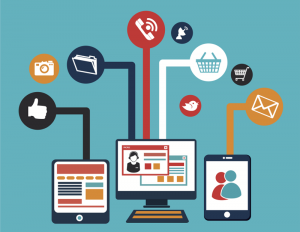Considering Working With B2B Influencers? Read This First
The following was previously oublished in an earlier edition of Marketing Insider.
Think B2C is the only arena in which marketers leverage influencers to cut through a noisy marketplace and build brand engagement? Think again.
In a world where the Edelman Trust Barometer found 63% of people trust influencer insights more than what an organization says about itself, B2B marketers are quickly catching on to the value of influencers.
If your B2B brand is considering engaging influencers, there are five key strategic factors to assess whether an influencer is a good fit.
Tip #1: Influencer prowess is more than a number. Unfortunately, many people associate B2B influencers with a number (for example, how many followers they have) instead of considering the quality of their content.
Focus on these questions instead: Do they have their fingers on the pulse of your industry? Do they hold values associated with your brand? Are they trusted by decision makers who could be prospective customers?
Tip #2: Consider the long-term relationship. You get more bang for your buck when you develop long-term, mutually beneficial relationships with your influencers. When selecting candidates, consider:
- The type of content they’re creating and the topics they favor
- What platforms they are leveraging
- If there’s a specific format they prefer (i.e., written word, video, audio, etc.)
Then engage with the influencer to co-create content that’s mutually beneficial to both of your brands.
Tip #3: Monitor and engage on a human level. Influencers are real people, not just a means to an end. Randomly calling on influencers when you have a product or service that needs promoting is not going to deliver the best results.
Instead, monitor influencers who serve your industry and topic clusters to find content that’s a match. Then engage them via your brand’s or an executive’s social media account to reference their work and pursue the relationship over time.
Tip #4 Think micro, not macro. Pursue micro influencers who specialize in a particular topic area but have smaller followings. Why? Because they get results. You’re not just trying to reach just any people, you’re targeting the right people.
So if an influencer has 1,000 followers who model your target audience, that’s better than one who has 500,000 followers, but only 50 of them worth your while.
Tip #5: Make sure to measure results. There are a number of different ways to measure the success of a B2B influencer, depending on your particular marketing goals. They include:
Brand awareness: What was your reach during the influencer partnership, compared to what you would have accomplished without?
Share of voice (SOV): Consider tracking both your SOV against your competitive set in general — and also against competitors who might be utilizing the same influencers as your brand.
Cost per engagement: Take a close look at cost per engagement to make sure you’re spending your money in the right place and achieving your engagement goals.
Working with influencers is a new marketing concept for many B2B brands. If you do your research, hone your influencer list, and build long-term relationships, your audience, content, and marketing budget will thank you.
(34)
Report Post






